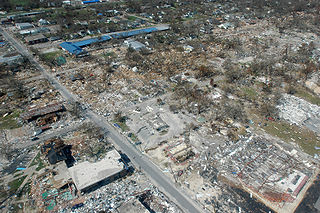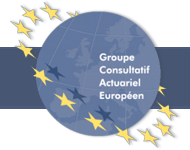Related Research Articles

An actuary is a professional with advanced mathematical skills who deals with the measurement and management of risk and uncertainty. These risks can affect both sides of the balance sheet and require asset management, liability management, and valuation skills. Actuaries provide assessments of financial security systems, with a focus on their complexity, their mathematics, and their mechanisms. The name of the corresponding academic discipline is actuarial science.

Actuarial science is the discipline that applies mathematical and statistical methods to assess risk in insurance, pension, finance, investment and other industries and professions.

The International Actuarial Association (IAA) is a worldwide association of local professional actuarial associations.

The Society of Actuaries (SOA) is a global professional organization for actuaries. It was founded in 1949 as the merger of two major actuarial organizations in the United States: the Actuarial Society of America and the American Institute of Actuaries. It is a full member organization of the International Actuarial Association.

The Casualty Actuarial Society (CAS) is a leading international professional society of actuaries, based in North America, and specializing in property and casualty insurance.
The Institute of Actuaries was one of the two professional bodies which represented actuaries in the United Kingdom. The institute was based in England, while the other body, the Faculty of Actuaries, was based in Scotland. While the Institute and Faculty of Actuaries were separate institutions, they worked very closely together, and their professional qualifications and actuarial standards were identical. On 25 May 2010, voting members of the institute who took part in a ballot voted to merge the institute with the faculty, thus creating the Institute and Faculty of Actuaries, which came into being on 1 August 2010. The Institute of Actuaries ceased to exist on that date.

The Actuarial Association of Europe (AAE) was established in 1978 as Groupe Consultatif des Associations d'Actuaires des Pays des Communautés Européennes (GC), renamed to Groupe Consultatif Actuariel Européen in 2002, and given its present name on January 1, 2014.

The Canadian Institute of Actuaries (CIA) is the national organization of the actuarial profession in Canada. It was incorporated March 18, 1965. The FCIA designation stands for Fellow of the Canadian Institute of Actuaries. As the national organization of the Canadian actuarial profession, the CIA serves the public through the provision by the profession of actuarial services and advice by: representing the Canadian actuarial profession in the formulation of public policy; promoting the advancement of actuarial science; educating and qualifying CIA members; ensuring that actuarial services provided by its members meet accepted professional standards; and assisting actuaries in Canada in the discharge of their professional responsibilities.
The Faculty of Actuaries in Scotland was the professional body representing actuaries in Scotland. The Faculty of Actuaries was one of two actuarial bodies in the UK, the other was the Institute of Actuaries, which was a separate body in England, Wales and Northern Ireland. While the Faculty of Actuaries and the Institute of Actuaries were separate institutions, they worked very closely together, and the professional qualifications and professional standards for actuaries were identical in each of them. On 25 May 2010, voting members of the Faculty who took part in a ballot voted to merge the Faculty with the Institute of Actuaries, thus creating the Institute and Faculty of Actuaries which came into being on 1 August 2010, superseding the Faculty of Actuaries which ceased to exist on that date.
The following outline is provided as an overview of and topical guide to actuarial science:
The American Academy of Actuaries, also known as the Academy, is the body that represents and unites United States actuaries in all practice areas. Established in 1965, the Academy serves as the profession's voice on public policy and professionalism issues.
Founded in 1888, the Actuarial Society, is the professional association of actuaries in the Netherlands. Nearly all Dutch actuaries are members.

The Institute of Actuaries of India is the sole national apex body for actuaries in India. It was formed in September 1944 by the conversion of the Actuarial Society of India into a body corporate by virtue of the Actuaries Act, 2006. It is under the ownership of Ministry of Finance, Government of India.
The German Actuarial Society or German Association of Actuaries is the association of actuaries in Germany. It is a full member of the International Actuarial Association and the Actuarial Association of Europe (AAE). The Association has nearly 5,500 fully qualified members, with further 1,600 students in the process of qualifying. Current chairman of the Association is Guido Bader. CEO is Michael Steinmetz. The Headquarter is located in Cologne.
The Czech Society of Actuaries is the association of actuaries in Czechia. It aims to promote education and research in actuarial science and to mediate social and professional contacts among actuaries.
The Conference of Consulting Actuaries (CCA) is a professional society of actuaries engaged in consulting in the United States and Canada, as opposed to those employed by insurance companies. CCA members assist their clients with respect to pension, health, and other employee benefit plans; life insurance; and property and casualty insurance.
The International Association of Black Actuaries (IABA) is a tax-exempt, nonprofit professional organization that represents black actuarial professionals and students around the world. Its members include Fellows, Associates and students of the Society of Actuaries, the Casualty Actuarial Society, the Institute and Faculty of Actuaries, and Enrolled Actuaries originating from the United States, Canada, Caribbean and African nations.

The Institute and Faculty of Actuaries is the professional body which represents and regulates actuaries in the United Kingdom.
The actuarial credentialing and exam process usually requires passing a rigorous series of professional examinations, most often taking several years in total, before one can become recognized as a credentialed actuary. In some countries, such as Denmark, most study takes place in a university setting. In others, such as the U.S., most study takes place during employment through a series of examinations. In the UK, and countries based on its process, there is a hybrid university-exam structure.
Patrick L. Brockett is an endowed Chaired Professor within the Information, Risk and Operations Management, Finance, and Mathematics departments at The University of Texas at Austin. He is the Director of the Risk Management and Insurance Program, Director for the Center of Risk Management and Insurance, and Director for the Minor/Certificate in Risk Management Program. He is also an Affiliated Faculty Member in the University of Texas- Austin Division of Statistics & Scientific Computation. He is known for his research in statistics, probability, actuarial science, quantitative methods in business and social sciences, and risk and insurance. The American Risk and Insurance Association (ARIA) endowed and named a research award in his honor: The Patrick Brockett & Arnold Shapiro Actuarial Research Award, awarded to the actuarial journal article that makes the best contribution of interest to ARIA risk management and insurance researchers.
References
- ↑ "Seputar Aktuaris Sept 2018" (PDF). Society of Actuaries of Indonesia. 2018-09-01. p. 8. Retrieved 2024-05-26.